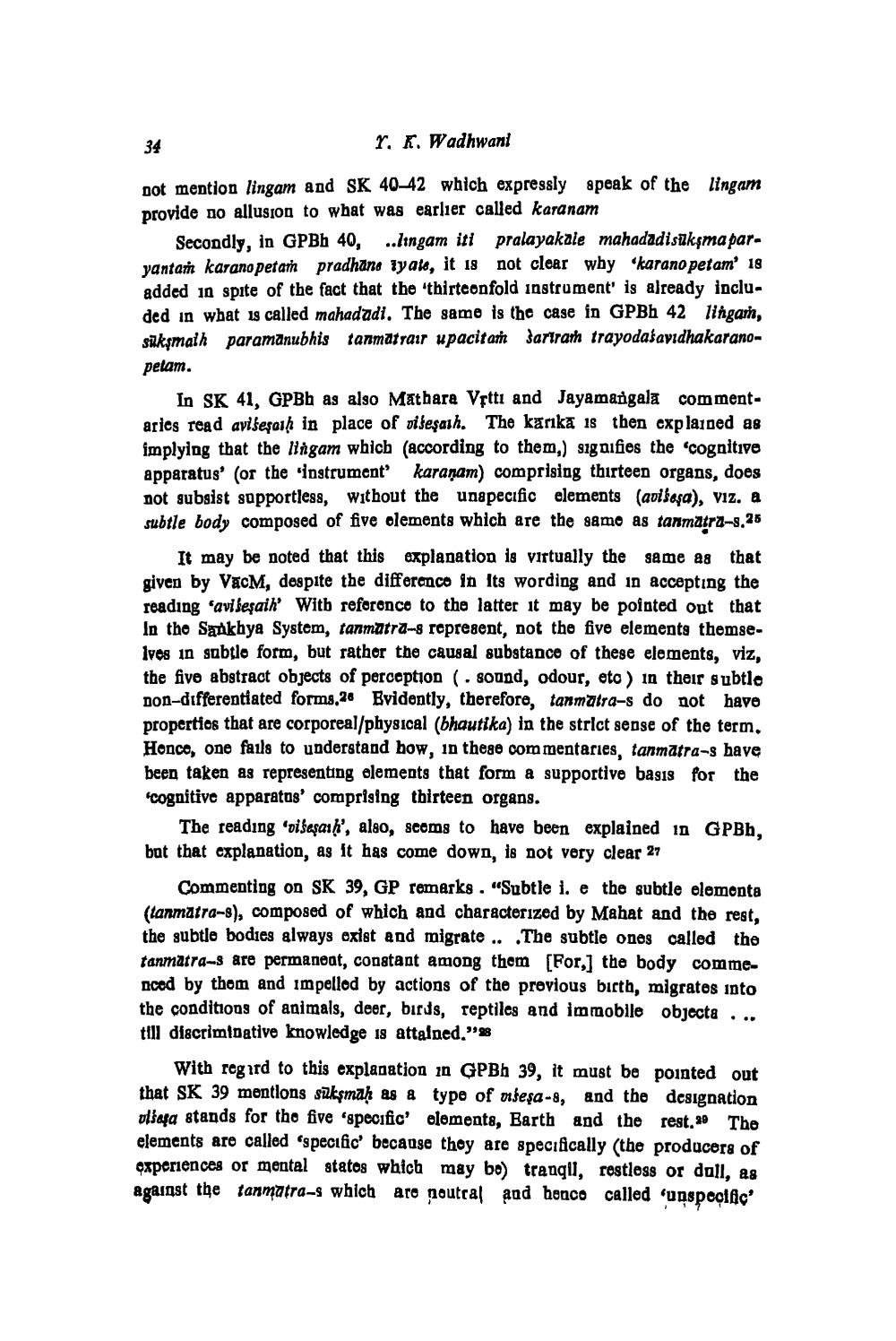________________
34
r. K. Wadhwani
not mention lingam and SK 40-42 which expressly speak of the lingam provide no allusion to what was earlier called karanam
Secondly, in GPBh 40, .. lingam iti pralayakale mahadadisüksma paryantam karano petam pradhana Tyats, it is not clear why 'karano petam 18 added in spite of the fact that the thirtconfold instrument' is already included in what is called mahadadi. The same is the case in GPBh 42 lingam, sükşmalh paramanubhis tanmatrair upacitam sarirath trayodafayıdhakaranopelam.
In SK 41, GPBb as also Mathare Vștti and Jayamangala commentarics read aviseşoih in place of bileşarh. The kanka 18 then explained as implying that the lingam which according to them,) sigaifies the cognitive apparatus' (or the instrument' karanam) comprising thirteen organs, doos not subsist sopportless, without the unapecific elements (aolboşa), viz. a subtle body composed of five olements which are the same as tanmatra-s.26
It may be noted that this explanation is virtually the same as that given by VacM, despite the difference in Its wording and in accepting the reading "avi beşaihWitb reforonce to the latter it may be pointed out that In the Sankhya System, tanmatra-s represent, not the five elements themseIves in subtlo form, but rather the causal substance of these elements, viz, the five abstract objects of perception (.sound, odour, eto ) in their subtle Don-differentiated forms,26 Evidently, therefore, tanmutra-s do not have properties that are corporeal/physical (bhautika) in the strict sense of the term. Henco, one fails to understand how, in these commentaries, tanmatra-s have been taken as representing elements that form a supportive basis for the 'cognitive apparatos' comprising thirteen organs.
The reading “visaşarh', also, scoms to have been explained in GPB), but that explanation, as it has come down, is not very clear 27
Commenting on SK 39, GP remarks . "Subtle i, e the subtle elementa (tanmatra-s), composed of which and characterized by Mahat and the rest, the subtle bodies always exist and migrate ...The subtle ones called the tanmatra-s are permaneat, constant among them [For,] the body commenced by them and impelled by actions of the previous birth, migrates into the conditions of animals, deer, birus, reptiles and immobile objecta ... till discriminative knowledge is attained."28
with regard to this explanation in GPBh 39, it must be pointed out that SK 39 mentions sūksmah as a type of beşa-8, and the designation olšaja stands for the five 'specific' elements, Earth and the rest. 29 The elements are called 'specific' because thoy are specifically (the producers of experiences or mental statos which may bo) tranqıl, restloss or dall, as against the tanmatra-s which are noutral and henco called 'unspoolfic'




